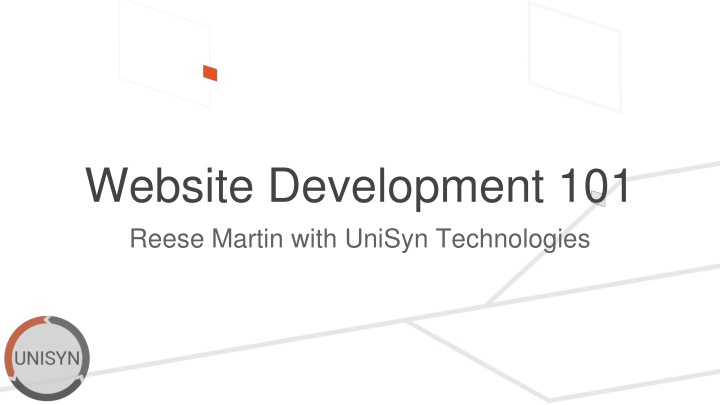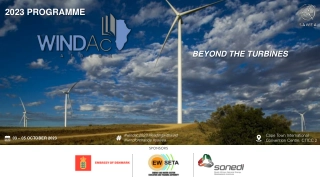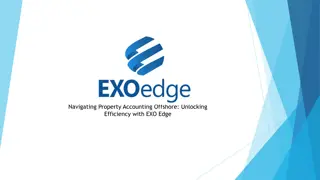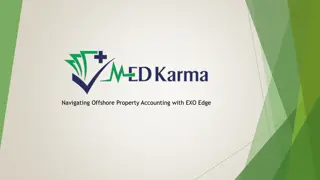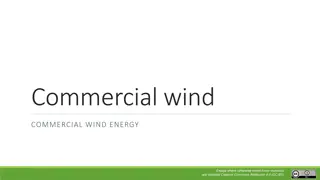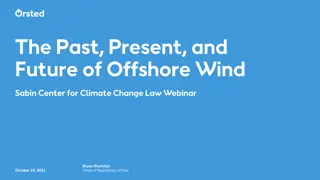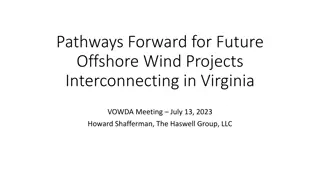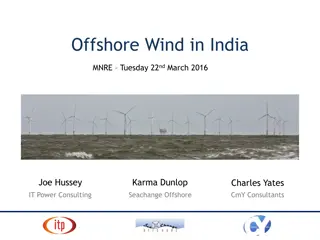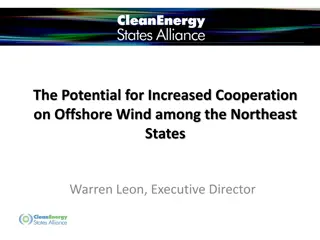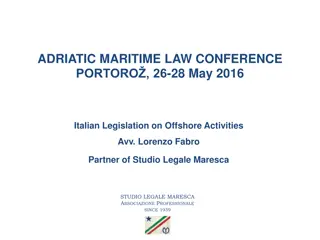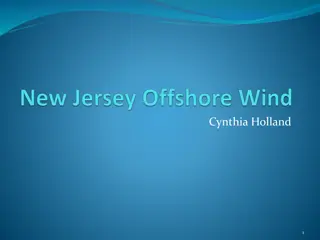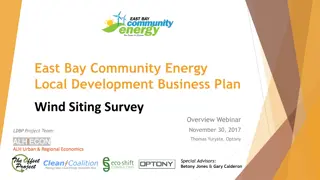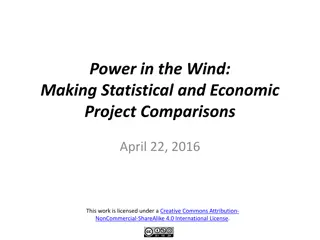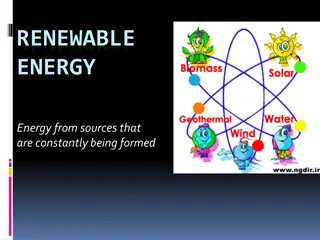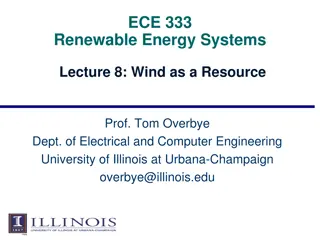Offshore Wind Energy Applications and Data Sources
This information delves into the significance of wind data for offshore wind energy applications, focusing on parameters like wind speed, direction, wave height, and more. It discusses the utilization of met-ocean data for tasks such as evaluating wind power density, weather forecasting, and design optimization for offshore wind turbines. The sources of data, including in-situ measurements, meteorological masts, and remote sensing techniques, are highlighted along with the advantages and disadvantages of in-situ measurements.
Download Presentation

Please find below an Image/Link to download the presentation.
The content on the website is provided AS IS for your information and personal use only. It may not be sold, licensed, or shared on other websites without obtaining consent from the author.If you encounter any issues during the download, it is possible that the publisher has removed the file from their server.
You are allowed to download the files provided on this website for personal or commercial use, subject to the condition that they are used lawfully. All files are the property of their respective owners.
The content on the website is provided AS IS for your information and personal use only. It may not be sold, licensed, or shared on other websites without obtaining consent from the author.
E N D
Presentation Transcript
Website Development 101 Reese Martin with UniSyn Technologies
Who We Are We re a full service web design and development agency Website design and development Hosting infrastructure Graphics and logo design Custom application development www.unisyntechnologies.com Content development and planning Search Optimization Ad campaign development and management Project management and success tracking
What Well Cover Today Why Is A Website Important? Website Goals Audience Conversion Providers Design Q&A Link to the presentation: bit.ly/unisynwebsite101
Why Is A Website Important? First impression and visibility People want to look you up to see if you are a good fit before reaching out. 75% of users admit to making judgments about a company s credibility based on their website s design. Ease of access Your website is always available to provide information and move forward your sales process even when you are unavailable. Automated lead generation and sales Your website provides an entry point for your audience to begin the sales process in a self- service fashion when it is convenient for them.
Website Goals: Audience Who are you wanting to target? Realistically who is most likely to convert to a sale? What type of person are you wanting to improve the conversion rate for? Where is your target audience? What social media platforms and websites do they most frequently use? What are you wanting to say to this audience? Is there information that your target audience already knows and can be kept short and sweet to avoid unnecessary clutter and redundant blocks of text? Pick imagery that not just fits your business but that your target audience will respond well to.
Website Goals: Conversion What should people do when they visit your website? Reach out via email or phone Ecommerce checkout submission Learning via demos, videos, and product breakdowns Recruitment Newsletter or mailing list signup What is the order of priority for conversion You can have multiple conversion goals This could be pushing ecommerce products at the top of the page, a newsletter signup at the bottom of the page as a secondary goal, with a contact us button in the footer as a final goal.
Providers Deciding if DIY is right for you Possible Pros Budget: The biggest attraction for DIY is budget. DIY can result in a lower upfront cost. Possible Cons Time and Energy: Making layout and design decisions and using a builder to implement those decisions will take some time and patience to learn. Customization: In order to offer an approachable DIY solution, builders only offer so much customization ability. You can also run into situations where the ability to customize is there but it requires you subscribe to an upgraded plan.
Design Mobile friendly More than half of traffic comes from mobile so design with mobile first, not an afterthought. Don t overcrowd the page To much content and huge walls of text reduce your ability to get the message across in the short valuable time you have with the visitor. Illustrations, videos, and photos People remember only 20% of what they read but 80% of what they see. Emphasis Use color, bold text, and differing sizes to draw attention to areas that support your goals.
Design Don t confuse your users. Visitors will arrive expecting to be able to interact with your website similar to how they have interact with other websites. In order to optimize their journey through your site, you should provide them with similar tools to move around. Providing a foreign user experience can result in users getting frustrated and leaving before you are able to achieve the goal of your website. Just a few examples: Search bar in plain view on all pages for ecommerce Social media share buttons at the top or bottom of the page Contact us form on expected contact us page along with email and/or phone number and physical address if applicable
Design Use call to action sections and buttons to move forward your goals These call to actions tell visitors to take a specific action phrased as commands such as Shop Now or Let s Talk and link to the appropriate page or form to complete that action. Provide alternative methods of moving through the website Not everyone moves through websites the same or arrives on the site in the same spot A portion of your target audience may prefer to arrive at the homepage and scroll down the page clicking links as you present them. Another portion of your target audience may prefer to immediately click an item in the navigation at the top of the page to find what they are looking for. An example would be having a contact form at the bottom of your homepage and also have a contact us page in the navigation with a contact us form on that page.
Questions? Link to the presentation: bit.ly/unisynwebsite101 www.unisyntechnologies.com
